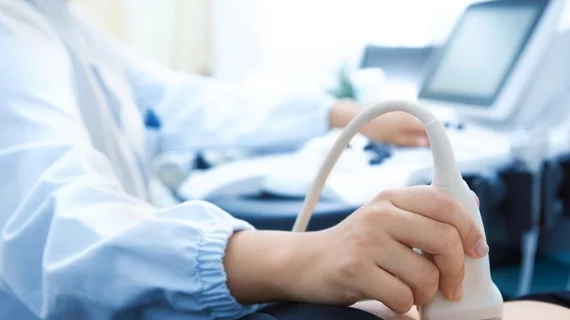Should radiology programs up their hands-on ultrasound training?
Although radiologists routinely assist in or fully conduct ultrasound exams, many residents do not feel well-equipped to do so independently. Experts recently proposed that an additional scanning rotation could change this [1].
In a new paper published in Academic Radiology, experts detail the implementation of a supplementary scanning rotation alongside a digital ultrasound tutorial course for radiology residents and its subsequent impact on their comfort with the modality. Based on the post-intervention surveys completed by resident participants, the added curriculum was effective in improving both skills and confidence with ultrasound.
“Many courses exist for teaching US scanning to non-radiologists, but fewer courses are available to radiologists who need to strengthen their core skills,” research leader Janet R. Reid MD, from the Department of Radiology at the Children's Hospital of Philadelphia, and colleagues noted.
The Accreditation Council for Graduate Medical Education (ACGME) requires that radiology training programs include a minimum of 75 hands-on ultrasound scans during residency, but some have questioned whether this is enough to achieve competence with the modality. And although there have been numerous initiatives to include additional hands-on ultrasound education, they are often met with challenges due to the many clinical service obligations that residents have.
For this initiative, residents already rotating through pediatric ultrasound were given the opportunity to complete a one-week scanning rotation and an integrative digital tutorial on US (this was in addition to completing the traditional one-month rotation). Residents who chose to participate completed pre- and post-intervention surveys, and an expert technologist assessed the residents’ scanning skills on a volunteer patient. Participants were divided into two groups—a control group that did not complete the added training and one intervention group that did.
The intervention group indicated that they felt significantly more confident following the intervention, and technologist assessments of resident skills were similarly positive, revealing that the intervention group displayed stronger skills in comparison to the control group. The ultrasound tutorial was also effective, with 80% reporting that they found it helpful.
“Adoption of hands-on US in radiology residency will help our specialty stay at the forefront of this modality,” the group wrote, adding that this sort of curriculum could be easily integrated into other training programs.
To learn more, click here.

